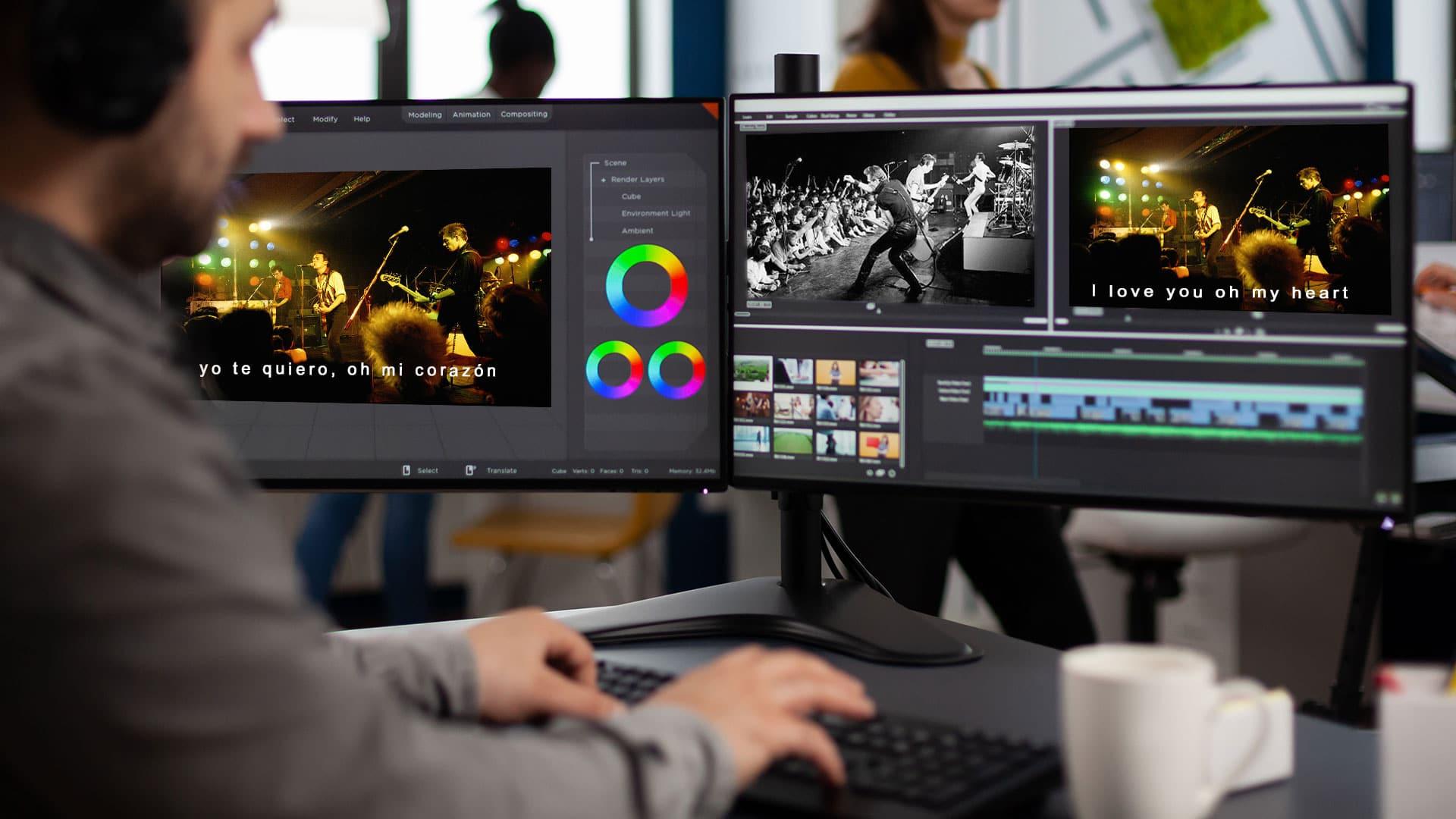CIT provides media audiovisual translation language services across caption services, subtitling services, dubbing translation services, voice over translation, and audio description services.
Described, captioned and other forms of audiovisual translation requires a keen understanding of both technical features available in media to specific needs of deaf, to the visually impaired audience.
CIT's audiovisual services is a leading provider of described, captioned and assisted media services. We provide quality translation and interpreting to the deaf or visually impaired audience across a variety of languages.
The local production community relies on CIT for script proofreading and script translations, you can too.


We want your audience to be able to enjoy your content with ease! Let us help your target audience understand what’s happening on screen so they can follow along without missing a beat. Your audience deserves access to everything life has to offer, no matter who or where you are!
Similar to transcription which uses words to make a text document, captioning divides a text document into small parts, called "frames".
There are automated caption translators. Closed Captioning
Subtitles
Subtitles for the Deaf and Hard of Hearing (SDH)
Off-line, On-line, Pop-up, Roll-up, Paint-on

The process of dubbing is used to translate foreign-language films into the audience's language, so that audiences can watch these movies.Dubbed translations are matched carefully with lip movements in a film.
Dubbing is often confused with voiceover translation by people who do not know what it means; however, this term refers exclusively to audio dialogue inside of video formats and does not refer at all to translated dialogues outside videos or without any vocal components such as text on screen for example subtitles (or closed captions).
Dubbing relies on accurate matching between spoken words and mouth movement since most viewers will rely on visuals first when watching an audiovisual production before processing sound separately through their ears -which isn't always easy because there may be differences.
Subtitles are translations for people who don't speak the language displayed in the media. Subtitles are what you see in a video that tells you what is being said in another language.
You need people who can do a good job at this because it is not easy to translate from one language into another.
When dubbing is translated into a foreign language, it mimics the lip movements of actors in films to show accurate translations. But what's voiceover?
Voiceovers are not always considered dubbed and they can be subtitled as well!
We provide translation and interpreting of described, captioned and assisted media specific to the needs of deaf, hard-of-hearing and blind people. Our services are available in over 200 languages for any type of media – from TV shows to movies to live events.


No matter what your needs may be, we can and are ready to assist you now. We have translators and interpreters standing by 24/7.

CIT's interpreter is such a rockstar, and it’s so great to have him as a lead interpreter for our Board meetings. About Our Interpreters 
Thank you for always being able to handle emergency interpreting assignments with ease. About Urgent Requests 
Thank you for always being able to handle emergency interpreting assignments with ease. About Urgent Requests 
Your translation rates are more competitive than other language service providers I used in the past. About Pricing 

Professionalism matters at CIT. We respond to request inside 24 hours.







